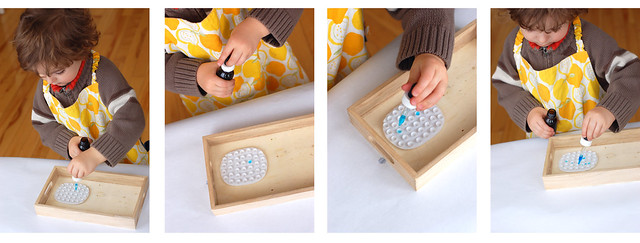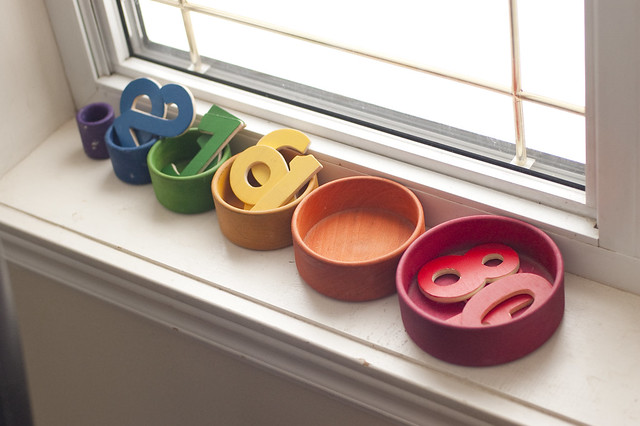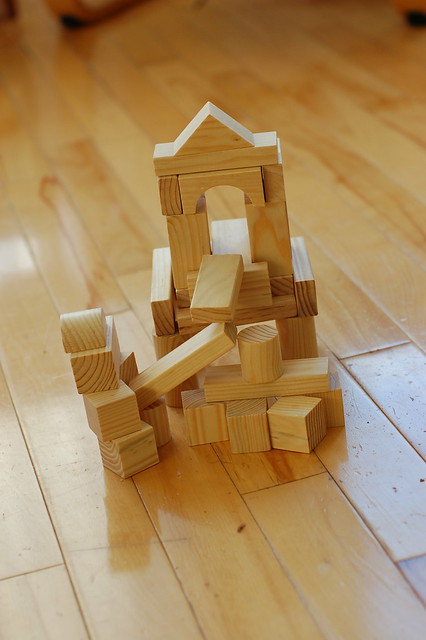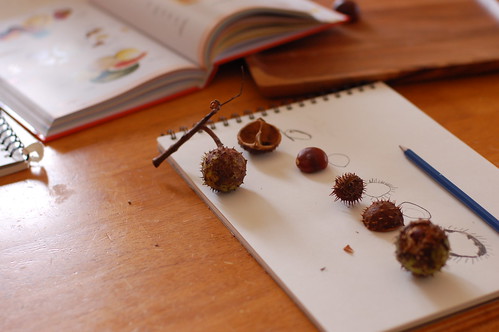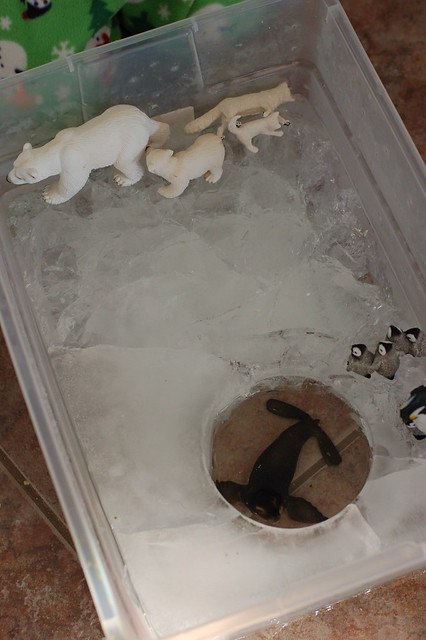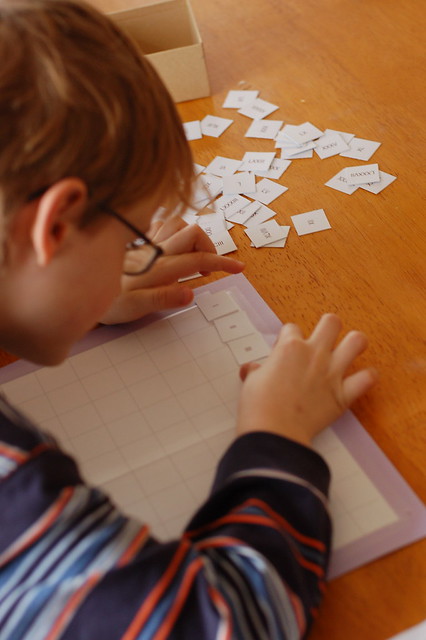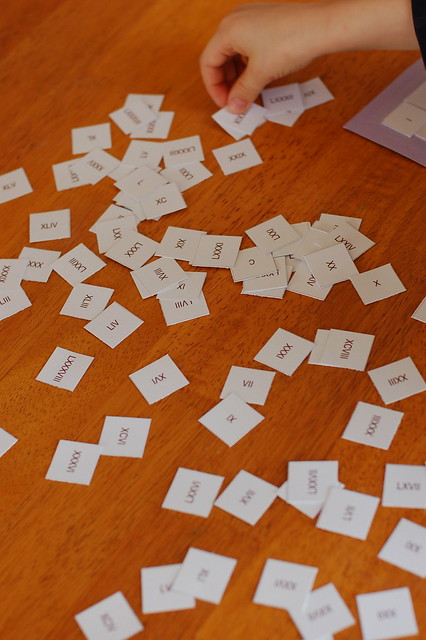Wednesday 6 February 2013
MONTESSORI ICI HAS MOVED
And also changed...
Since this blog's name wasn't necessarly still reflective of our daily reality, I took the opportunity to change it and go with something that is more neutral.
The site has been on for the last few days, but I just wanted to male sure it seemed like running smoothly before making the official transition.
Here is it: Welcome to Three oaks
Please, come and join me there, I would love to have you all!
Saturday 2 February 2013
Big changes ahead
Blogger is at it again...I think I have reached the limits of what I find acceptable.
Expect big changes soon :)
Expect big changes soon :)
Friday 1 February 2013
The hand and it's tools
"The hands are the instruments of man's intelligence" M. Montessori
The importance of the hand is at the heart of Montessori education. The use of hands helps the child construct itself thought Maria Montessori. "The hand is the tool of the mind". Years later, science tends to prove that indeed manipulation is paramount in learning, and that retention will be greatly enhanced if the child learned through manipulation rather then mere rote learning.
If the hands bear such importance, then the tools we use should allow the hand to work at optimum level: to help the learning process, but also to foster the love of learning.
What is more frustrating, even for us adults, to use a tool that is either defective or of poor quality? This experience can be even more frustrating for the little child who does not have the amount of coordination we do for common tasks.
I often see in children's store or catalogues tools aimed for children that are either poorly constructed or made with lesser quality products. And unfortunately, they seem to be the norm.
They are also usually made to entice the children's eyes, with bright colors of other features like mass media products which, in the end, makes them overwhelming. For the parents, these items are cheap, and thus interesting budget wise.
But if the hand truly has the importance we attribute it, I think it is wise to use high quality, functional, attractive and beautiful material to keep it working.
Children are able to use tools way before we expect them to and better then we them credit for. What they need is guidance and an adequate and safe environment where they can experiment with such tools.
E was given true and good quality tools at a very young age. And I can see the results of this already. His desire and will to work with his hands and use tools is very strong.
I try to fill his need of using his hands for very meticulous tasks by having a rotation of practical life activities requiring fine motor skills, hand eye coordination, and also deep concentration... in a variety of situations, whether they are real of artificial.
Good quality tools can be found now easily thanks to a some Montessorians who wished to offers good tools that would be correctly sized for children.
I usually find what I need and get inspired by:
For Small Hands and Montessori Services : both have beautiful and inspiring material for the small and not so small child
Michael Olaf is another site that is just as wonderful.
But do not underestimate locally found products. There are many treasures that can be found in regular stores. Sometimes, it is just a matter of thinking outside the box.
Thursday 31 January 2013
Everyday Montessori
I have no idea what happened, but I lost my blog post yesterday after it got posted... Blogger cam really be a pain sometimes...I miss wordpress...
This is something I frequently find in the house. A spontaneous sorting activity initiated by E. I just have to leave the material in an easy to reach spot in an attractive way. These colored bowls are his favorite for any color sorting activities.
This time, he used the number puzzle that was close by as objects to sort. Sometimes, he goes around the house and uses other items, and sometimes he asks for material, or he uses the ones I provide with the bowls. I rotate this material often.
Color sorting is a good and easy to set up Montessori activity for all ages. You can easily step up the work by letting the child search in the house for colored object without having a reference in his hands, or over ask for shades a few colors. This also has the benefit of teaching new vocabulary and train the eye to become more accurate in distinguishing hues.
Pinterest is full of ideas for color sorting activities, if you need more inspiration.
Friday 25 January 2013
Why we have incorporated Reggio in our lives
A post on How we Montessori triggered a discussion about Reggio Emilia, and I thought the topic was interesting enough to share it widely.
After mentionning Reggio Emilia to her, she confessed that she was rather turned off by this because of the artistic aspect of it. And I could completely relate as I had a similar feeling at first.
I kept being pulled back to Reggio, but would always stop myself in my tracks at the mention of the "hundred language of children" which implied artistic activities.
I am a scientist, in my job and in my head. Art was not something that was promoted when I was a child. I have no problem letting my children explore art, contrarily to what my experience as a child was, but I don't feel like the best person to guide them through this since my limited experience and knowledge of arts. X is not a very artistic boy either. He is a very reality based child. He is very creative in what he does, but not in arts per se. How could Reggio work here?
But surprisingly, I have been able to find my niche in Reggio, or maybe what I do is Project based "homeshooling", (but truly, I do not think ones need to homeschool in order to incorporate that in their lives), it does not matter, I do not want to get stuck in semantics here.
What I didn't understand is 100 languages of children doesn't have to be limited to art. You can find your own definition of a language, as long as somebody can express what they are learning, in a manner they are comfortable to.
One of the principle that I have always adhered to, coming from Montessori, was the idea of following the child. She said that the child is not an empty vessel in which we could pour knowledge, but rather an individual that can and know what he needs to build himself. Letting him choose his experiences, and letting him be intimate with those is important for him to grow. Reggio allows just that, following the interest of the child, just not in a set environment, with specific material.
Reggio states that the child should be able to work in an area of interest for the amount of time he wants, with the means that speaks to him, without being directed or lured to learning a specific set of knowledge. Choosing an interest and building on it as long as the child can, as long as his interest flourish within that topic, and let oneself go with the flow along other interests that are somehow connected. That is what Reggio is about. The beginning of a project includes brainstorming, new ideas that needs to be developed, tried and improved. It means discussions and reading have to take place to get ready, ideas have to be shared analyzed, fine tuned and even documented... so many skills that are very welcome in life.
The child should be able to revisit his work and even start it over again, and this should not be seen as a waste of time, but rather as adding another layer of knowledge, a new experiment of the previous work, seen with new eyes, and with more experience this time. The child is able to choose what he needs to learn and how to learn it following his own interior"plan"and we should trust this blueprint of construction. This does not mean that the child should not be guided though, and guidance can be an asset to the child's learning.
Feels a lot like Montessori Cosmic Education to me, with an emphasis on expression.
Montessori insisted upon the importance of attention, letting the child have the space and time to develop this. This is nurtured and sustained by letting the child live in his project at his own pace.
So really, with this angle, I am not surprised Reggio was appealing to me, it feels so close to Montessori.
So now, how about the expression part?
I think there is more to painting and modeling for expressive means.
X is a builder. He loves mechanics. The down to earth kid.
When he is pursuing a topic, he looks at books, looks at images and study them. He regularly ask me to make photocopies of these images and he pins them to his board.
He study these images and he learns the vocabulary that is associated to it. I have even seen him identifying part of these drawings.
More often then not, he tries to build something that is associated with the topic, often with success, sometimes not.
In this project about space, he looked at launch pads that he recreated with blocks for block play later during the day. I even saw him try to make a astronaut suit to be used in prop play.
 |
| photo taken by X and used as an inspiration to make an astronaut suit |
Recently, he has been interested in becoming better at drawing. I don't think his art experience will go any further then this. But I agree that a minimal knowledge of drawing and sketching is an asset, even to a scientist. He sketched rockets and space shuttles, designing new features on them. He talked to us extensively about those drawing, explaining what parts does what.
And don't get me started on LEGOs. We have many weeks of rocket building with LEGOs. I think this is a mean of expression that is just as valuable then painting.
Photographs are also a big part of X documenting his work. He loves to photograph what he does and have the pictures printed. I am sure that he is about to go to another level in photography and try photo montages and such.
 |
| Photograph taken by X at one of the space museum. He was interested, no, fascinated by the mechanics of the reactors |
Other things possible are the launch of a blog, newsletters, whether written or with images only, making a lecture to member of the family or friends, making an exposition of photograph taken, or a book maybe or even a video...I think the possibilities are endless, if we can get out of the art (painting, modeling...) box.
This space topic has been on for months now. He has learn a lot through it, and not only about space. About vocabulary, about weather, about geography, about launch pads, famous astronauts, moon exploration and so on. And I see that it is about to shift. The topic of telescopes is the turning point. He has been getting a wider interest in using the tools for observations: magnifying glass, binoculars...and most of all how they work. I don't know where this will settle, but I will be curious to know.
These are the reasons we chose to incorporate Reggio in our house. We feel as parents, that the importance of being the director of your life and of your learning is one that cannot be understated. We truly believe in the capacity of the child to build himself and the need, as parent, to guide them without directing them. I have seen X do things he would never had done if it would have been part of an imposed project. And I think that the learning not only takes place on the topic the child is researching, but also at meta level: learning about learning, which curiously, is not a topic taught in many school around here, and yet is one that is necessary in life.
To close this post, I would like to link to a video that I found while researching rocket projects for X. I really loved looking at it, but X was truly inspired by it, by wanting to retouch his ideas, try something else, and revisit ideas he had but didn't think would work.
We both loved how Reggio and Montessori were co living in the learning experience. I have to admit that is has influenced how we are going about homeschooling here. Note that the project is mainly construction based, there is not a lot of art, drawing being put aside, during the construction of this. I hope you will enjoy it as much as we did!
If you are interested in Reggio or project based homeschooling, I strongly suggest Lori's book Project Based Homeschooling, which was the book I needed to make the plunge and most importantly, have a better understanding of this.
Thursday 24 January 2013
Life in the polar region
Cold has been upon us big time lately. Yesterday was a record day of -39 degrees. We are talking about fast frost bite upon getting outside if a part of your skin is uncovered.
Freezing.
Our time outside has thus been somehow limited this week, and so what better days to learn about Arctic and Polar regions? We sure have the feel of how cold these regions can be all year round (or almost...)
I took the Polar animals play to another level. Producing ice is more then easy right now, and it is really fast.
I had planned this activity for E, but again, all three of them were interested in participating, and the activity triggered many questions about ice, cold, Polar regions, frost and so on
E's interest was the name of the animals, both in english and french. He played a lot about the connections between mothers and babies.
X's interest was more about the interaction constituting the food chain: who eats who and most of all how. His other very deep interest was about the evolution of the block of ice. Why we heard the ice crack, if this could happen in the Polar regions too, and what were the consequences of this. Why the middle of the ice was melting sooner then the top part and so on. I left the bin out for most part of the day, and I saw him go back and forth to see what happens as the ice melts. He did until the ice cracked under the weight of the animals, this is the part he was waiting for.
E brought his book out to enhance the play. He loved copying some of the scenes of the book on our ice patch.
How I did that:
I used Schleish animals, although the scales are not compatible... (which irritated me a little).
To make the hole in the ice, I used a plastic bowl. I left the bin outside with the bowl in it yesterday during the day. The bowl was filled with sand so that it could sink in the water. DOn't fill it with water, unless you don't mind leaving the plastic bowl in the ice patch.
Right after dinner, I got it in so that the ice would melt just enough so that I could remove the plastic bowl. As soon as this was done, I returned the bin outside until this morning. Then we just had to add water to simulate the ocean.
The same could be done in a big freezer; right now here, the freezer is used for free...
Thursday 17 January 2013
Learning Roman numerals
On the morning of december 26th, we had a very important breakfast at my husband's grandmother's house. We don't get to see her very often because she lives far away, and so she was anxious to have some time with us all.
Right after breakfast was over, X came over in the dining room and actually asked me to teach him the Roman numerals...! This kids who doesn't want to have anything to do with schooling for months now came to ask me to teach him Roman numerals. Both DH and I were floored. How could I refuse? Thankfully, Grandma tagged along with us talking about Roman numerals. I am sure she was expecting the morning conversation to be miles away from that.
I am not sure what triggered this question, although I had a doubt. He watched Astérix the night before on tv with his cousins. I know that in this particular movie, they are searching for a house, and Obélix asks what xvi (said like a word in the movie) means.
The topic was raised again after we came back home, and I saw a real interest in the topic.
I put together, on a whim, a hundred Roman numeral board. Thankfully, I was able to use a printable here
(Participassion is an awesome french website with tons of fantastic resources! Love it!)
Printed it, glued it on whatever card stock we had around, and X immediately started to work.
He completed the chart once, it was a very long process, and nothing could distracted from it. He asked me to do a recap chart so that he could correct himself. And then, once completed, he was done. He hasn't touched it since, and surprisingly he now knows everything about roman numerals...and I have come to understand a few more things about him in the process.
Subscribe to:
Posts (Atom)




